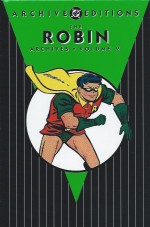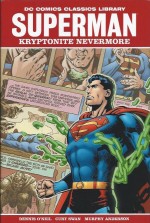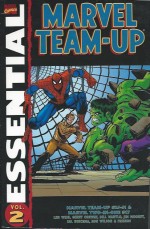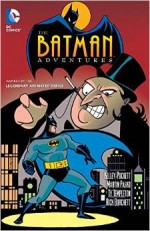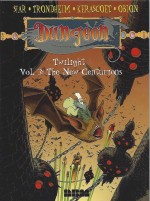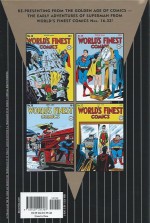
By Méziéres & Christin, with colours by E. Tranlé; translated by Jerome Saincantin (Cinebook)
ISBN: 978-1-84918-244-7
Valérian and Laureline is the most influential science fiction comics series ever created; witty, passionate, wry and jam-packed with stunning and disturbing ideas rendered in a hypnotic, addictive, truer-than-life art style that is impossible to resist.
Valérian: Spatio-Temporal Agent debuted in Pilote #420 (November 9th 1967) and was an instant hit. It gradually evolved into Valerian and Laureline as his rowdy red-headed female sidekick developed into an equal partner – and eventually scene-stealing star – in an intoxicating succession of light-hearted, fantastically imaginative, visually stunning, time-travelling, space-warping socially aware epics.
The so-sophisticated series always had room to propound a satirical, humanist ideology and agenda, launching telling fusillades of political commentary and social satire to underpin an astounding cascade of visionary space operas.
At first tough, bluff, taciturn, affably capable, unimaginative, by-the-book space cop Valerian just did his job: tasked with protecting official universal chronology (at least as per Terran Empire standards), he countered any paradoxes precipitated by incautious time-travellers.
When he fetched up in 11th century France during debut tale ‘Les Mauvais Rêves (‘Bad Dreams’, and infuriatingly still not translated into English), he was saved from inevitable doom by a capable young woman named Laureline. In gratitude he brought her back to the 28th century super-citadel and administrative capital, Galaxity, where the feisty firebrand took a crash course in spatiotemporal ops before accompanying him on his cases.
The opening shot in the series’ first truly extended saga, Châtelet Station Destination Cassiopeia, was originally serialised in the monthly Pilote (issues #M47 to M50, 21st March to June 27th 1978) before being collected later that year as eighth album Métro Châtelet Direction Cassiopée. The story concluded in follow-up album Brooklyn Line Terminus Cosmos – which I’ll get to, once it’s published at the end of summer…
It all begins with the partners far apart in time and space. Laureline pensively voyages to the fabulous Cassiopeia system, for once enjoying the many wonders of space as she travels at sub-light speed through the phenomenally populous yet cosmically fragile region.
Her journey to Solum is broken up by many stopovers as she gradually gathers snippets of gossip which cohere to reveal an unsettling trend: subtly voiced concerns that some merchants are pushing strange and dangerous technologies on buyers extremely unsuited to possess them…
Although separated by centuries and light-years, Laureline and Valerian are enjoying impossibly intimate contact. Thanks to Terran ingenuity – and recent neurosurgeries – the partners are telepathically linked and sharing information on the mission.
His mission is playing out in Paris in 1980 where he idly observes the variety of human types frequenting the café he impatiently haunts; constantly reminded how little he knows or understands the people and history of his birthworld.
Things aren’t helped by the volubly affable, infuriatingly unrushed and always tardy Mr. Albert. Galaxity’s man in the moment is a sort of human X-Files: investigating, sifting and collating incalculable amounts of data on everything fringe, strange or whacky which occurs in the 20th century he has adopted as a home-away-from-home.
Breaking contact with Laureline, Valerian learns from the verbose nerd that appalling, monstrous manifestations have been terrorising the world and now this city’s subway system. Sensing action at last, the impulsive hero rushes to the site of the latest occurrence, abandoning Albert to follow up on something which has piqued his scholarly curiosity. Both are blithely unaware that a suspect band of not-so-ordinary Parisians with similar interests are mere metres ahead of them.
What Valerian confronts is a horrific thing out of the inferno, but even it is not immune to the futuristic weaponry he’s carrying in kit form. All he has to do is assemble it before being eaten…
In the aftermath Albert acts quickly to extract the wounded hero from hospital before doctors and cops start asking too many of the right questions. Later, over a luxurious dinner, the epicurean investigator shares a sheaf of files and clippings of monster and UFO sightings which only hint at why Valerian is stuck in a temporal backwater whilst his partner is covering the colossal Cassiopeia system alone…
Synching up again later despite constant headaches, Valerian hears her tell of the incredible inhabitants of Solum and her candid interview with the living memory of the race as well as sundry other wonders before contact is explosively ended by a phone call from Albert warning him that he is being watched…
After deftly dodging his tail Valerian receives a most distressing communication from Laureline. Her pleasant chat with the memory of Solum has uncovered news of a planet which long ago endured a similar plague of mysterious manifestations. It doesn’t exist anymore…
Therefore she’s off to incomprehensibly vile universal garbage dump Zomuk in pursuit of another promising lead, but before Val can warn her to stay away from the junk world, mind-contact is lost…
At that 20th century moment he and Mr. Albert are embarking on a bus ride to rural wetland idyll Doëre-la Rivière in search of marsh-monsters and dragons, only to surprisingly discover no accommodation available in the usually dead-in-the-off-season resort.
All rooms have been taken by scientists working for W.A.A.M (World American Advanced Machines): a mega-corporation in contention with the ubiquitous multinational Bellson & Gambler.
Both companies keep cropping up in Albert’s files of the weird and unexplained…
Soon the mismatched spatio-temporal operatives are trudging through acres of misty mire, encountering young Jean-René who offers to lead them to the infamous monster everybody is searching for.
When they find the Brobdingnagian beast, only Valerian’s disintegrator saves their lives. They quickly return to Albert’s paper-&-scrap-packed Paris flat, where the quirky researcher decides it’s time his impatient young colleague meets his secret source: a bizarre modern mystic and seer named Chatelard who cannily points out the affinities between the manifestations met so far and the classical ancient concept of The Four Elements…
He also points out that one could call highly ranked corporate businessmen the “hidden high priests of today’s worldâ€, whilst mentioning that a pretty blonde woman from abroad recently offered him a lot of money for the same insights…
Later, as Albert sifts through the precious papers, reviewing all he has on Bellson & Gambler, frantic Valerian finally re-establishes contact with Laureline, just as she concludes an epic struggle against ghastly odds and enters a hidden shrine to gaze upon fantastic representations of Four Elemental Forces which underpin the universe…
Once again contact is broken and in a petulant rage the astral adventurer storms out into the Parisian night. Utterly oblivious to the fact that he is being followed by enigmatic figures in an expensive automobile, he accepts a lift from a pretty girl in a sports-car…
To Be Concluded…
Bold, mind-boggling and moodily mysterious, this splendid change of pace accentuates the deadly dangers which underscore this astonishingly imaginative series; eschewing the usual concentration on witty japery and politico-philosophical trendiness in favour of mounting suspense, bubbling paranoia and stark suspense with mesmerising effect.
However, no matter how trenchant, barbed, culturally aware or ethically crusading, these tales never allow message to overshadow fun or entertainment and as ever Méziéres & Christin leave their avid readers hungry for more …
© Dargaud Paris, 1980 Christin, Méziéres & Tran-Lệ. All rights reserved. English translation © 2015 Cinebook Ltd.


